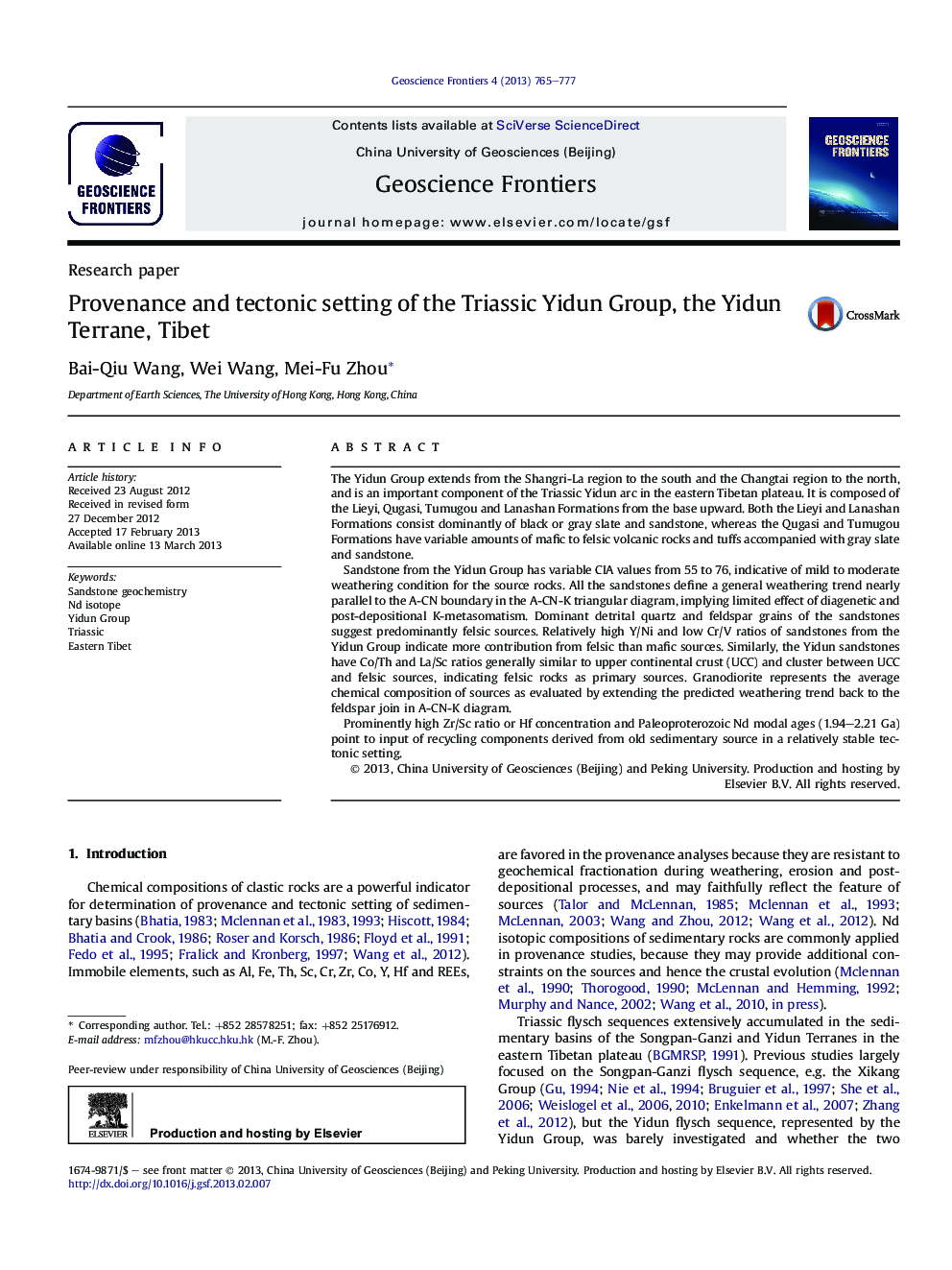| کد مقاله | کد نشریه | سال انتشار | مقاله انگلیسی | نسخه تمام متن |
|---|---|---|---|---|
| 4681657 | 1348864 | 2013 | 13 صفحه PDF | دانلود رایگان |
► Yidun Group characterized by recycled materials in a relative stable tectonic setting.
► The Zhongza Massif as the major source of the Yidun Group in the Changtai region.
► Eastward subduction of the Jinsha Ocean during the Triassic is not supported.
The Yidun Group extends from the Shangri-La region to the south and the Changtai region to the north, and is an important component of the Triassic Yidun arc in the eastern Tibetan plateau. It is composed of the Lieyi, Qugasi, Tumugou and Lanashan Formations from the base upward. Both the Lieyi and Lanashan Formations consist dominantly of black or gray slate and sandstone, whereas the Qugasi and Tumugou Formations have variable amounts of mafic to felsic volcanic rocks and tuffs accompanied with gray slate and sandstone.Sandstone from the Yidun Group has variable CIA values from 55 to 76, indicative of mild to moderate weathering condition for the source rocks. All the sandstones define a general weathering trend nearly parallel to the A-CN boundary in the A-CN-K triangular diagram, implying limited effect of diagenetic and post-depositional K-metasomatism. Dominant detrital quartz and feldspar grains of the sandstones suggest predominantly felsic sources. Relatively high Y/Ni and low Cr/V ratios of sandstones from the Yidun Group indicate more contribution from felsic than mafic sources. Similarly, the Yidun sandstones have Co/Th and La/Sc ratios generally similar to upper continental crust (UCC) and cluster between UCC and felsic sources, indicating felsic rocks as primary sources. Granodiorite represents the average chemical composition of sources as evaluated by extending the predicted weathering trend back to the feldspar join in A-CN-K diagram.Prominently high Zr/Sc ratio or Hf concentration and Paleoproterozoic Nd modal ages (1.94–2.21 Ga) point to input of recycling components derived from old sedimentary source in a relatively stable tectonic setting.
Figure optionsDownload as PowerPoint slide
Journal: Geoscience Frontiers - Volume 4, Issue 6, November 2013, Pages 765–777
